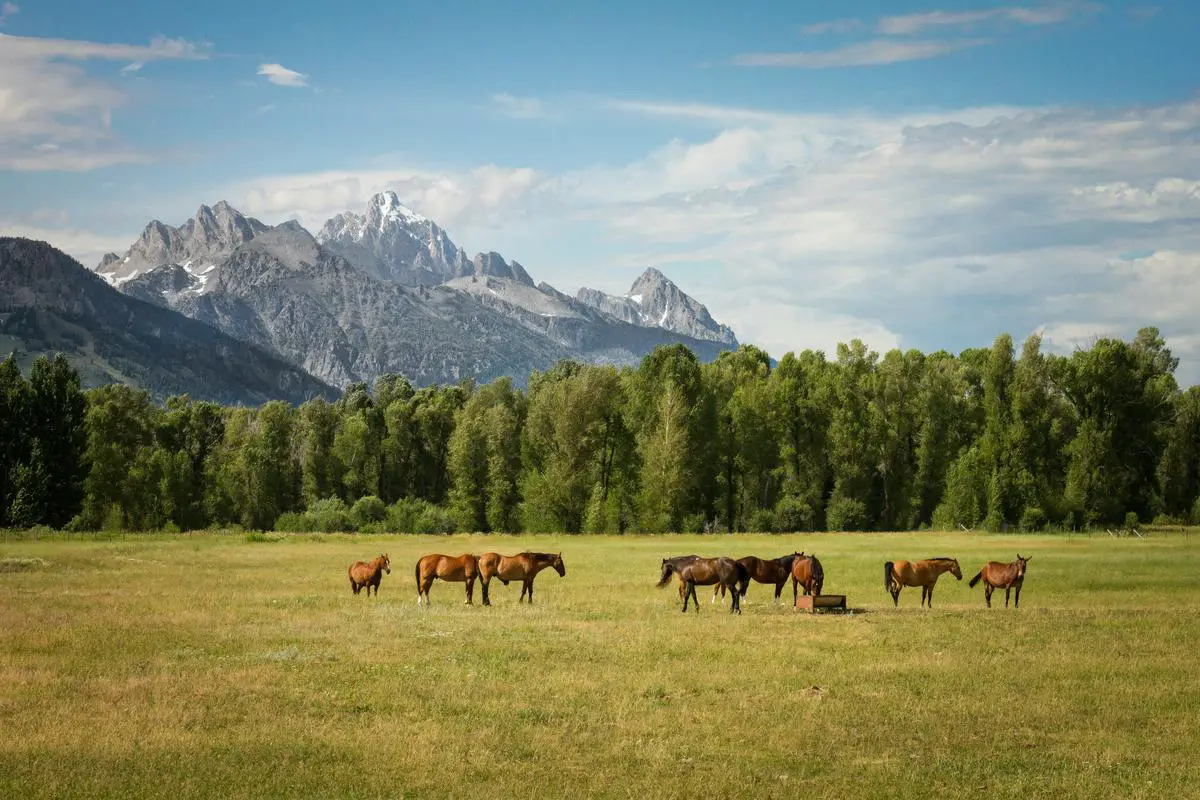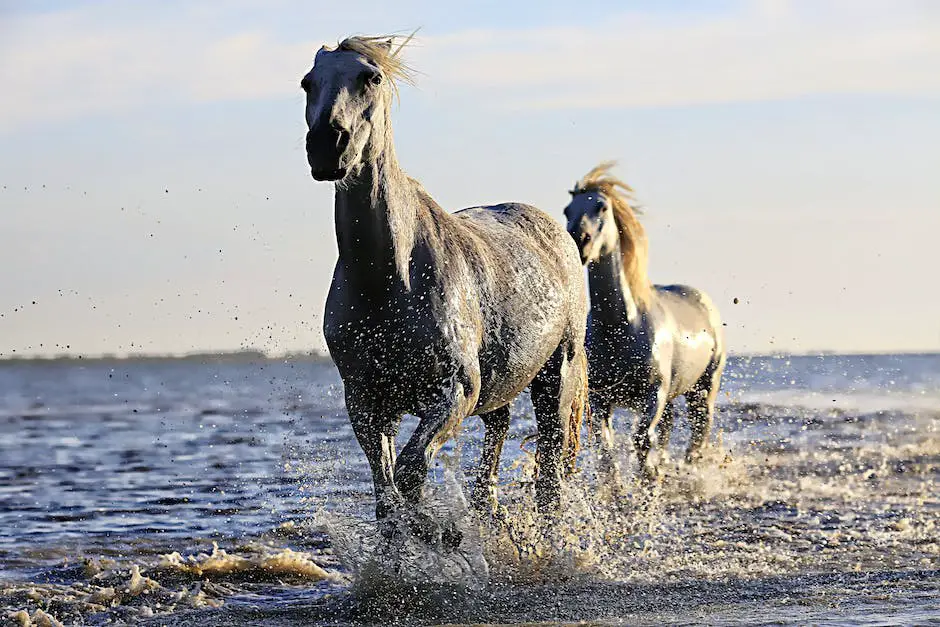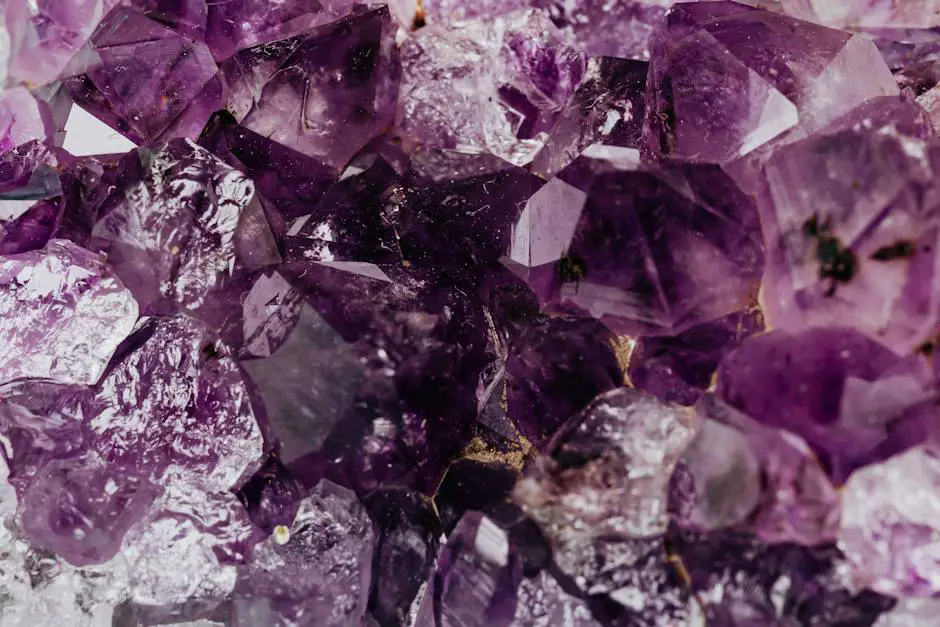Delving into the complex world of equine genetics and breeding, one cannot help but marvel at the remarkable Warmblood horse. Iconic for their strength, agility, and versatile functionality, Warmbloods not only stand tall in their own breed but also prove to be interesting subjects in the realm of crossbreeding. This expansive exploration navigates through the captivating lineage, intricate crossbreeding techniques, potential outcomes, and ethical facets attached to these magnificent creatures.
Table of Contents (Horspedia)
Understanding Warmblood Horses
Warmblood Equines: The Traits that Define this Majestic Breeds
For those immersed in the world of equestrian studies, the term “Warmblood” is undeniably intriguing. While these horses capture attention with their size, elegance, and prowess, what truly classifies a horse as a Warmblood extends beyond surface-level characteristics. Warmbloods hail from European descent, with their naming convention emerging from their temperament which finds a comfortable equilibrium between the “hot-blooded” or fleet-footed horses, and the “cold-blooded” or the rather placid draft breeds.
The critically important trait that distinguishes Warmbloods, sets them on a pedestal in the equine realm, is their lineage. Unlike Thoroughbreds or Arabians, which are “pure” breeds, Warmbloods are classified as a “studbook breed.” This essentially means they are not bred to retain a specific genetic purity, but rather are evolved through selective breeding aiming for specific attributes in performance, conformation, and temperament. Studbook records that track the genealogy of Warmbloods are rigorously maintained by various Warmblood registries across Europe, which themselves originated in the mid to late 20th century.
While variations occur among different Warmblood breeds due to regional adaptations and breeding goals, there are typical phenotypic traits that they share. Most Warmbloods are of substantial size, with an adult horse standing on average between 15 to 17 hands high. They display a muscular build, with a strong back and long, robust legs suited for sporting disciplines. At the same time, they depict grace and elegance, with a noble head set on a long, well-carved neck.
Moreover, these horses are explicitly bred for equestrian sport disciplines—dressage, show jumping, and eventing predominantly. As such, they exhibit athletic prowess, with an innate ability to master complex movements with ease and precision. Their exceptional “sportive” characteristics, combined with a calm, trainable temperament, have garnered Warmbloods accolades in international equestrian competition.
Interestingly, their athletic capability does not compromise their calm demeanor, rather showcasing a balanced, intermediate temperament. The term “Warmblood” actually represents this balance—neither as fiery or flighty as a Thoroughbred (hot-blooded) nor as unflappable and plodding as a heavy draft horse (cold-blooded).
Given these unique and carefully cultivated traits, it is no wonder that Warmbloods are often seen as the epitome of modern sporting horses. With their royal stance, superior performance capabilities, and calm demeanor, they exemplify the immense potential derived from selective breeding. The Warmblood classification is indeed a testament to the nuanced understanding of equine biology, the passion for equestrian sports, and the timeless art of horse breeding.

Basics of Horse Crossbreeding
To further a comprehensive view on the principles that underlie successful horse crossbreeding, it’s important to underscore the meticulous processes involved. Warmblood breeding requires specific tactics to cultivate the perfect blend of a horse that excels in sport yet remains even-tempered. The basis of these processes, however, is largely founded on genetic principles coupled with an understanding of both horse physiology and behavior.
Genetics play a seminal role in horse crossbreeding. DNA profiling enables breeders to make deliberate choices when selecting mate pairs. In the case of Warmbloods, these profiles are often scrutinized to identify and propagate desirable traits, especially those that correlate with athleticism and temperament.
The Mendelian inheritance model serves as a practical guide in this process. This model describes the passage of hereditary characteristics from parents to offspring. For Warmblood breeders, understanding the behaviors of genes passed down through dominant, intermediate, and recessive inheritance directly impacts the success of their breeding program.
Furthermore, Heterosis, or hybrid vigor – an increase in factors such as size, growth rate, fertility, and yield of a hybrid organism over the average performance of its parent breeds – is of particular importance in horse breeding. It’s a genetic principle widely applied to harness the potential of crossbred horses to possess superior traits than their parents.
Of course, while genetic principles are prominent in crossbreeding, understanding horse physiology and behavior also helps breeders refine their programs. Mating strategies, for instance, take into account the physicality and behaviors of specific horses in question, aligning them with suitable partners to ensure successful breeding.
Moreover, understanding the social behaviors of horses and their reproductive processes, including estrus timing in mares, is critical in planning breedings that are more likely to be successful. Smart breeding plans couple this knowledge with the hereditary and genetic advantages encapsulated in Warmbloods to produce top-quality offspring.
Laws of probability also inform successful crossbreeding. They dictate that a substantial number of breedings are necessary to increase the chances of achieving the desired traits. Thus, the precision and number of studbook records maintained by breeders of Warmblood horses contribute to the success of their breeding programs.
Overall, the principles underlying successful horse crossbreeding are grounded in a careful balance of several factors. Genetics undeniably form the backbone of practical breeding strategies. However, a deeper understanding of horse physiology and behavior, coupled with patient application of probability laws, all function collaboratively to achieve the ultimate goal: the creation of a horse breed – such as Warmbloods – that exemplifies athleticism and gentle temperament ideally suited to equestrian sports.

Warmblood Crossbreeding Strategies
Diving into the specifics of Warmblood crossbreeding, the strategies employed are a blend of time-tested methods and the application of modern technology. A key aspect is to acknowledge the significant influence of genetics and DNA profiling in horse crossbreeding. With advancements in genetic science, breeders now are able to ascertain the genetic diversity within a breed and identify genes responsible for specific traits, therefore enhancing the precision of breeding decisions.
Diving further into the science, the Mendelian inheritance model has a crucial impact on breeding programs. Warmblood breeders, much like in other studbook breeds, employ the principles of Gregor Mendel’s laws on inheritance to predict the probability of desired traits being expressed in progeny. The law of segregation and the law of independent assortment thereby turn into tools in the breeder’s arsenal.
Another interesting phenomenon at the heart of breeder strategies is heterosis, more commonly known as hybrid vigor. This refers to the tendency of crossbred individuals to show superior traits compared to their parents. When two Warmbloods from different subtypes are crossbred, the resultant offspring often shows enhancement in specific athletic capabilities. Thus, engaging heterosis is a path to improving performance metrics across successive generations of Warmbloods.
Understanding the physiological and behavioral attributes of the mating pair also plays a pivotal role in determining successful breeding outcomes. Every horse has a unique physiology and behavior which can significantly influence reproductive results. Hence, considering these aspects and selecting the mating pair accordingly, optimizes the chances of breeding success.
Moving on to one of the lesser-known, yet equally important aspects, understanding the social behaviors of horses and reproductive processes proves essential. Following a horse’s natural mating rituals can potentially improve conception rates. Keeping in mind such practices becomes crucial to maintain not at stake the animal’s welfare and the success of artificial insemination programs.
The importance of studbook records cannot be overstressed when it comes to Warmblood crossbreeding. These records lower the unpredictability by providing information about the lineage and related traits, which increases the probability of achieving desired traits in the offspring, and hence, expediting the process to reach specific breeding goals.
Probability laws, a facet of Mendel’s principles, are another component integrated into the breeding strategy. By predicting the likely inheritance patterns of specific traits based on probability, breeders can heighten the possibilities of successful outcomes and continually refine the breed’s characteristics.
The ultimate goal of these strategies culminates in creating a Warmblood breed exhibiting both, the athleticism required for equestrian sports as well as maintaining a gentle, tractable temperament. It is the blend of experience and experimentalism, knowledge and instinct, human ingenuity and evolutionary mechanics that carves out the path to this goal, subsequently ensuring the perpetuation and evolution of the magnificent Warmbloods.

Photo by hollymandarich on Unsplash
Impact of Crossbreeding on Warmblood Traits
Crossbreeding, an artful union of distinct purebred horses, is an essential component in the development of Warmblood horses, influencing not only their exterior but their inherent qualities internal traits as well. This, strategically guided by the studbook records, DNA profiling, and the Mendelian inheritance model, set the stage for a distinct breeding process that, if successful, will refine the Warmblood horse breed and yield a plethora of desired traits.
Scientific advancements in equine genetics have made it possible to trace lineage traits within the DNA of Warmbloods, establishing a sturdy foundation for selective crossbreeding. Embodied within the horse’s genomes lie secrets of their lineage, potential for disease, as well as their genotype—the genetic makeup that drives manifest physical traits, or phenotype. Unraveling these genetic codes aid breeders in selecting suitable pairing; assessing compatibility beyond the surface.
Warmbloods often witness intentional crossbreeding with the aim of augmenting already impressive qualities like endurance, agility, and grace, without forsaking their gentle temperament or compromising the balance between prowess and docility desired in the sport horse domain.
The Mendelian inheritance model grants further depth to this meticulously structured breeding program. It equips breeders with practical insights into genetic segregation and independent assortment—the processes that determine how a horse’s traits will be distributed to its offsprings. This model, albeit simplistic, plays a pivotal role in predicting the probability of desired traits manifesting in the offspring.
The driving force behind this crossbreeding practice is the phenomenon of heterosis, more commonly referred to as ‘hybrid vigor.’ The offsprings of two diverse breeds often exhibit superior qualities—the best of both worlds, in essence. In Warmbloods, heterosis may result in a more robust constitution, better disease resistance, and increased athletic prowess, factors that contribute immensely to their popularity in equestrian sports.
The physiological and behavioral attributes also shape the selection process in crossbreeding. Size, strength, athleticism, as well as behavioral aspects such as temperament and social behaviors, greatly influence breeding pair choices. The symmetry in their physiological attributes should complement each other to ensure a blend of agility and strength without excess or deficiency.
Furthermore, the interpretation of social behaviors and reproductive processes in horses is as significant as physical traits. Understanding stallion and mare behavior patterns, their reproductive health, and their social compatibility with prospective mating pairs further elevates the probability of a successful mating, enabling breeders to circumvent unnecessary hurdles and establish an efficacious breeding strategy.
Crossbreeding, hence, is not simply a game of chance—rather, it’s a calculated, evidence-based process armed with studbook records, genetic profiling, Mendelian principles, and an understanding of horse physiology and behavior. The ultimate goal isn’t mere crossbreeding, it’s to create a lineage—a new epitome of the Warmblood breed that boasts athleticism, grace, and a gentle temperament, perfecting the balance of traits that make it an excellent fit for the high intensity yet precisely controlled nature of equestrian sports.

Ethical Considerations in Warmblood Crossbreeding
Shifting focus to honing in on ethical considerations involves mapping the morality of the actions that highlight the cross-breeding process. Moral integrity is crucial in every scientific endeavor and, in breeding sports horses, it is no different.
Unquestionably, the primary ethical stratum of breeding Warmbloods involves the welfare of the horse. Warmblood cross-breeding for equestrian sports presents potential physiological demands on the horses. There may be the pursuit of extreme athletic prowess or temperament traits often leading to health issues. These issues could range from stress-induced disorders like gastric ulcers, triggered by rigorous training, to musculoskeletal diseases from selecting heavy musculature or large size breeds. Evidently, this brings us to the core ethical question — where is the line drawn between inciting genetic modification for sport and respecting an animal’s well-being?
Research in genetics and DNA profiling has been an enormous boon for horse breeding. However, it also has the potential for ethical violations. As science further unwraps the potential held in a horse’s genetic code, the question arises — to what level should we attempt to manipulate these genes? The risk of producing offspring carrying unwanted genetic mutations from gene dopping or germline interventions, in an attempt to uphold the modern sporting horse breed perfection, may lead to unprecedented health risks and ethical controversies.
The lure of heterosis is a potent temptation. Using the Mendelian inheritance model, the superior trait of one breed gets transferred to the offspring, creating the illusion of a “perfect” breed. However, the risk of inbreeding for such specific traits may amplify the probability of negative recessive traits, leading to genetic disorders in the offspring. Thus, the ethicality of focusing solely on desirable traits needs to be handled judiciously.
In an effort to refine and strengthen horse breeds, studbooks’ curation is an important task. Yet, an ethical quandary arises when the importance of purity is weighed against genetic diversity. The excessive focus on limited bloodlines to uphold the ‘purity’ may inadvertently contribute to a genetic bottleneck, decreasing genetic variation, and potentially amplifying the risk of genetic diseases.
Moreover, the horses’ mating strategy, to further highlight desired traits, may infringe on the natural behavioral patterns of the horses. Interrupting the natural courtship and mating behavior by forcibly pairing a specific stallion and mare for their traits may instigate stress and trauma for the animals.
Finally, the end goal to produce a Warmblood breed that showcases both athleticism and temperament is admirable, yet if it comes at the expense of the horse’s health and natural behavior, it becomes a question of ethics. The pursuit of excellence must always be tempered with compassion and respect for the animal’s innate nature. A responsible breeder, an ethical scientist, will never compromise the welfare of the animal for the glory of his sport.
In the realm of Warmblood cross-breeding, ethics and science are in a delicate dance — each one influencing, each one yielding, but at its heart, the horse remains the lead. Protecting its well-being stays the quintessential fulcrum around which ethical considerations turn. The beauty of a Warmblood is not just in its power, its ability, or its pedigr—no, the beauty is in the spirit, unbroken by unethical practices.

Warmblood crossbreeding is an intricate science intertwined with art, necessitating a thorough understanding of genetics, careful selection of breeding pairs, and rigorous commitment to the welfare of the horses involved. As we govern over this profound intervention in their bloodline, we are obliged to make informed, ethical decisions that preserve and enhance this noble breed. May our fascination and respect for these magnificent creatures, along with ethical regulations, guide us in trailblazing new paths in the wonderful world of Warmblood crossbreeding.
